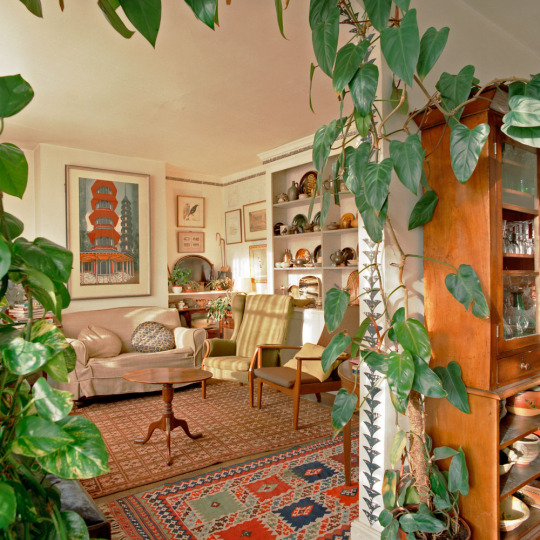
The art that Edward Bawden filled his home with were mostly the pictures of the friends he made during his life; from Paul Nash to his son Richard.
Some of these works can be seen from the photographs taken when Bawden died, but also from the many watercolours of his house in Saffron Walden as seen in last week’s post.
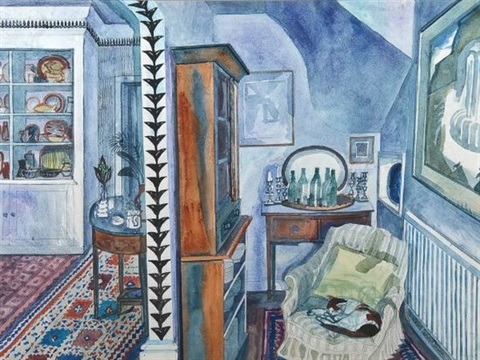
The Living Room, 2 Park Lane, Saffron Walden, 1985
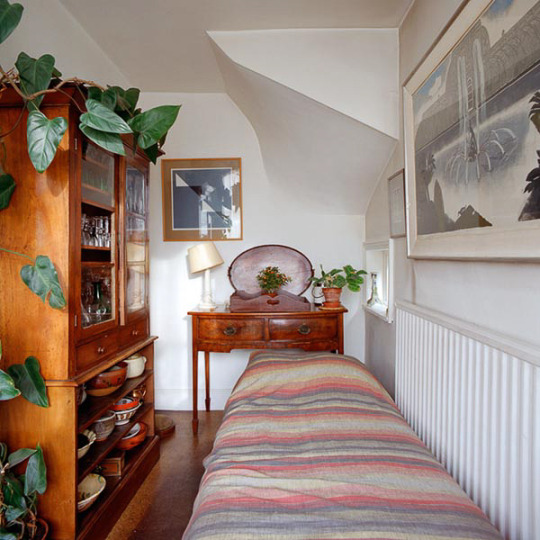
This is a picture of the corridor and a cupboard full of glasses and pottery. Bawden’s wife Charlotte Epton studied pottery with the Leach’s in Cornwall so it is likely it is part of her collection. To the right there is a print of Kew by Bawden.
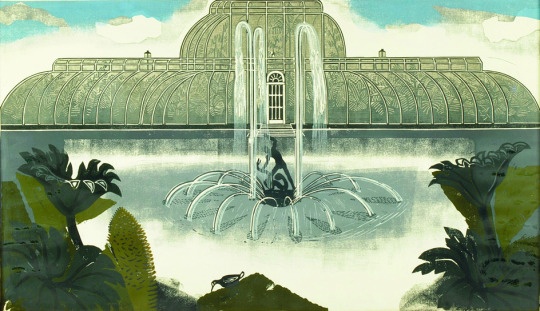
Edward Bawden – The Palmhouse, Kew Gardens, 1950
It was said Bawden’s wife Charlotte had a flair for decoration at Brick House but with his move to Saffron Walden after her death the house on Park Lane was decorated to his own tastes. Bawden used his reserve of Wallpaper stock to decorate many of the rooms in 2 Park Lane, Saffron Walden.

As shown with the various views of the sitting room in the photos and watercolours, the walls were lined with shelves of studio pottery and framed pictures.
In the photo above on the wall above the table in the centre is a large print by John Norris Wood ‘Country Garden Butterflies’ of a poise of flowers with butterflies around it. It turns out that within Edward’s lifetime there was a Eric Ravilious on the wall of a Harlequin but on his death Edward left it to Anne Ullman, Eric Ravilious’s daughter who later sold it to the Fry Gallery. ♠ When Bawden died and the Harlequin removed it was replaced with the John Norris Wood that Bawden much have also owned.
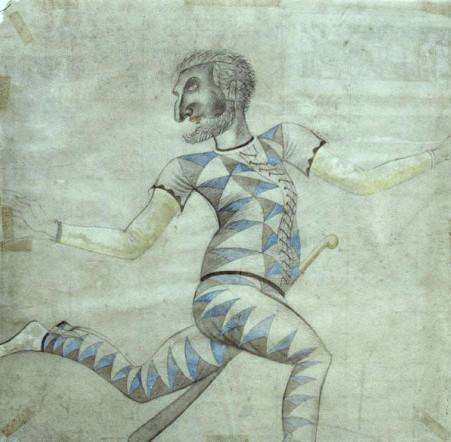
Eric Ravilious – Harlequin, 1928
This Ravilious watercolour was part of the preparatory work for the commission of a mural for the Refectory at Morley College, London.
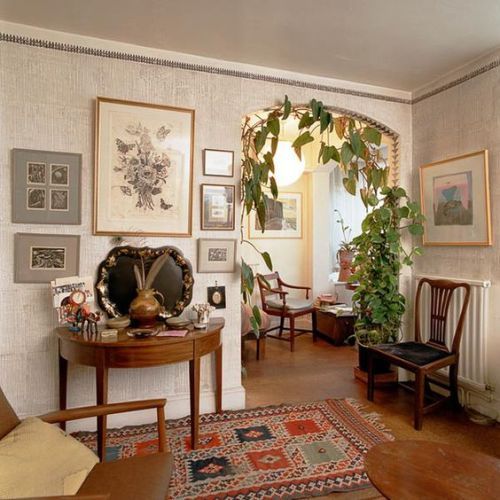
To the left of that image at the top is a set of four framed wood engravings by Paul Nash from the Nonesuch Press book ‘Genesis’, 1924, printed at the Curwen Press. How Bawden came to own them is quoted below:
The Curwen Press used Bawden’s patterns for wallpapers and were the earliest designs printed from linocuts by Edward Bawden. Paul Nash offered him support at the Royal College and exchanged five of his engravings for five of Bawden’s wallpaper patterns. †
Below the four ‘Genesis’ wood engravings and an engraving of ‘The Bay’, 1923. Through the archway and the Hoya Carnosa, hanging below the light and above the chair is a print by Edward’s son Richard, of the Aldeburgh Martello Tower.
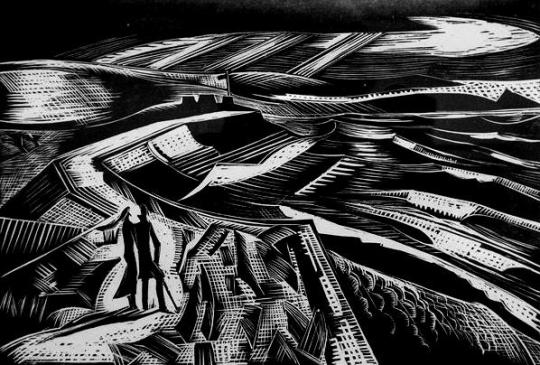
Paul Nash – The Bay, 1923
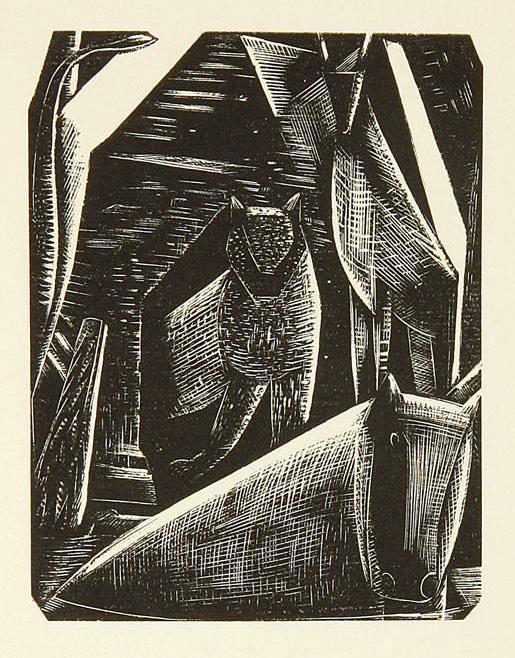
Paul Nash – Let the earth bring forth the creatures, 1924
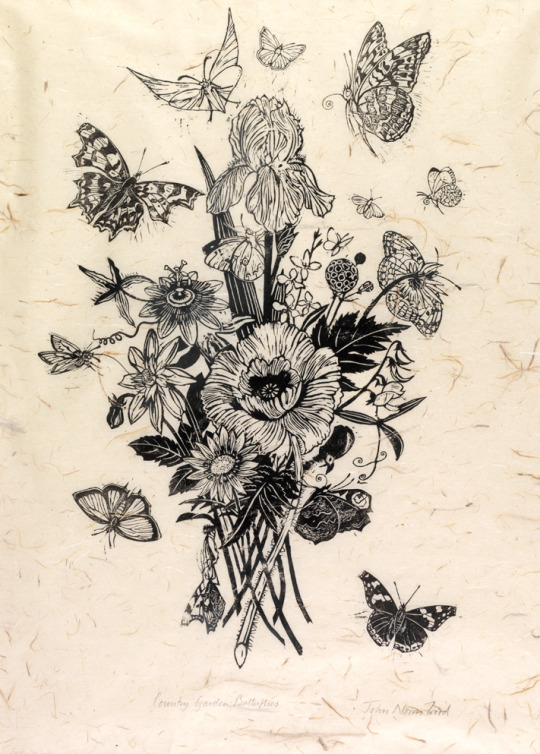
John Norris Wood – Country Garden Butterflies
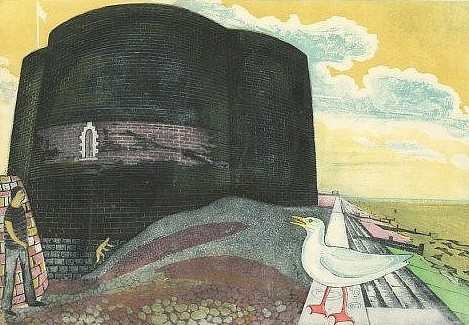
Richard Bawden – The Martello Tower, Aldeburgh
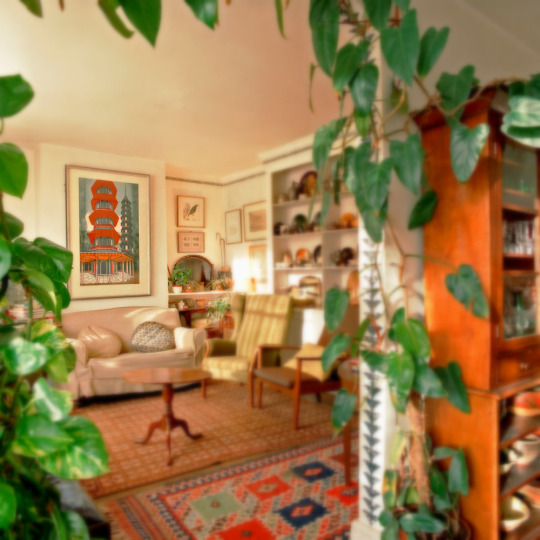
In the photograph above, framed on the wall is Edward’s large print of ‘The Pagoda, Kew Gardens’ looking bold with it’s bloody red roof is provides a strong colour scheme for the room and the Persian red carpets and would be opposite the print of ‘The Palmhouse’, as pictured above.
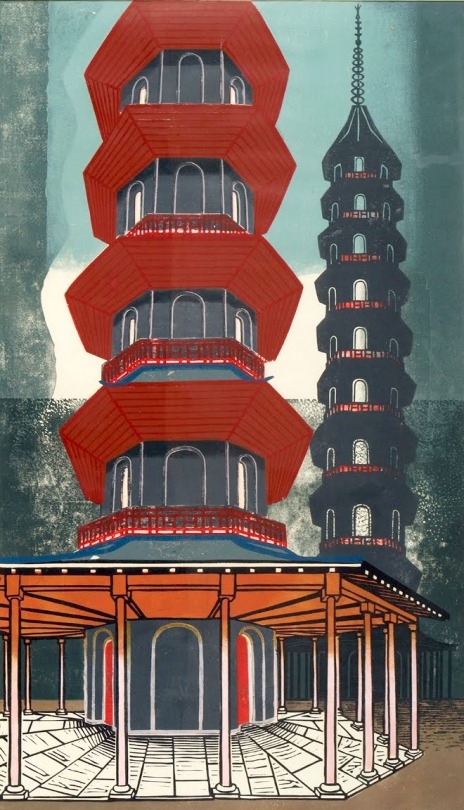
Edward Bawden – The Pagoda, Kew Gardens, 1963
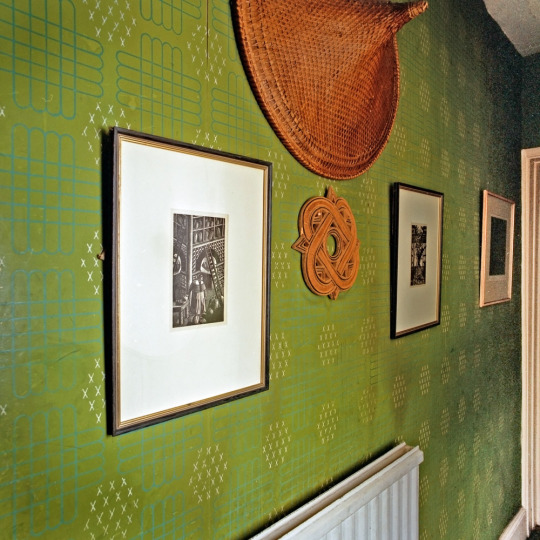
Here in this room the walls are lined with the wallpaper Edward Bawden worked with John Aldridge on called ‘Grid and Cross / Waffle (Green)’, printed by Cole and Son Ltd.
The framed pictures are wood engravings by Eric Ravilious. These where for the 1933 Golden Houses Press publication of ‘The Famous Tragedy of the Rich Jew of Malta’ by Christopher Marlowe.
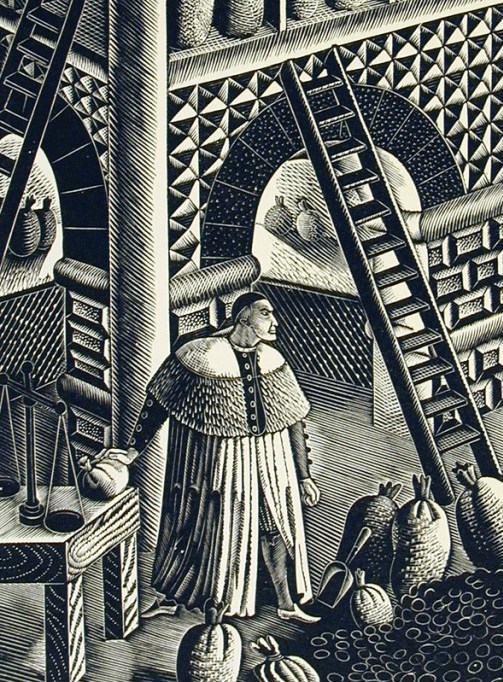
Eric Ravilious – Barabas in his Counting-house, 1933
This wood engraving was shown and for sale at the Society of Wood Engravers 14th show where the catalogue lists the print as ‘Wealthy Moore’.

Eric Ravilious – A charge, The cable cut, A cauldron discovered, 1933.
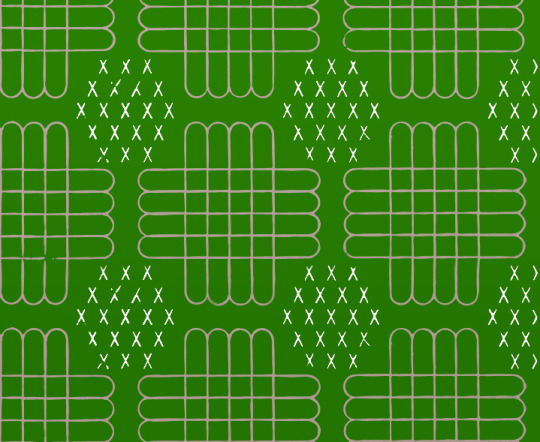
Edward Bawden – Grid and Cross & Waffle (Green), 1938
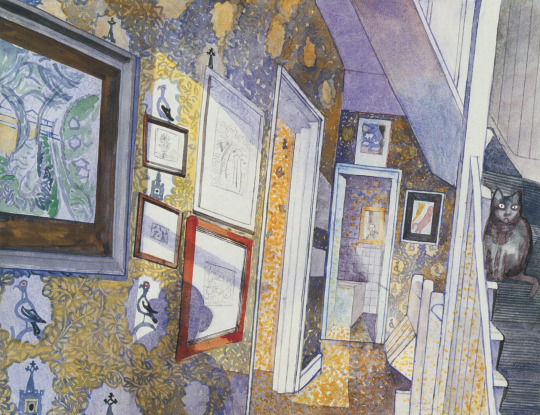
Edward Bawden – Cat among Pigeons, 1986
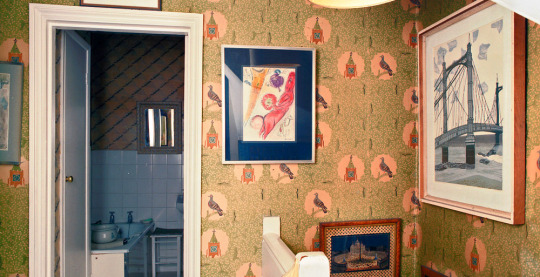
Pictured at the end of ‘Cat among Pigeons’ is the door to the bathroom and the stairwell to the ground floor. The pictures on the wall are a lithograph by Chagall and again, one of Bawden’s own prints. A small print of St Peter’s Basilica is in the bottom right corner of the photo. The wallpaper is ‘Wood Pigeon’ one of the Plaistow Wallpapers that was later printed by Cole and Son Ltd.
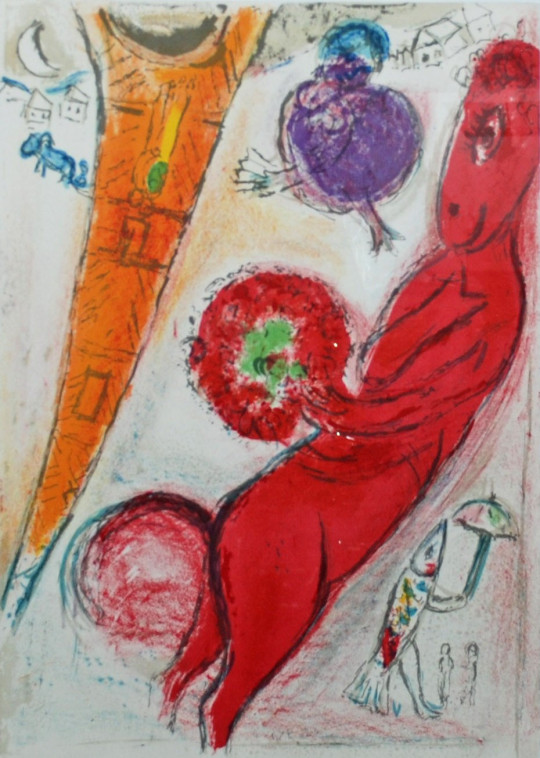
Marc Chagall – Donkey & the Eiffel Tower, 1954

Edward Bawden – Albert Bridge, 1966
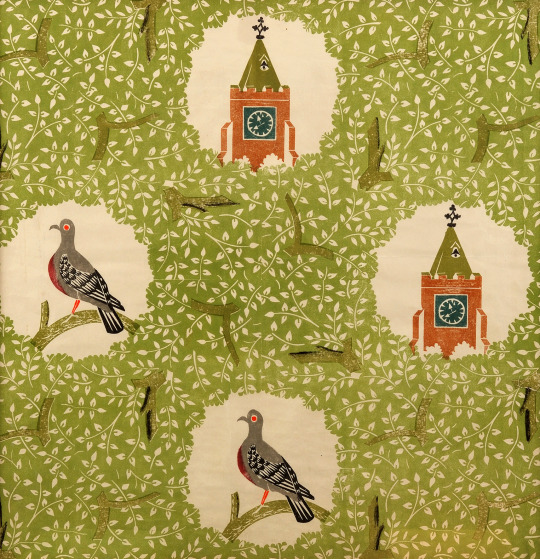
Edward Bawden – Wood Pigeon, 1927
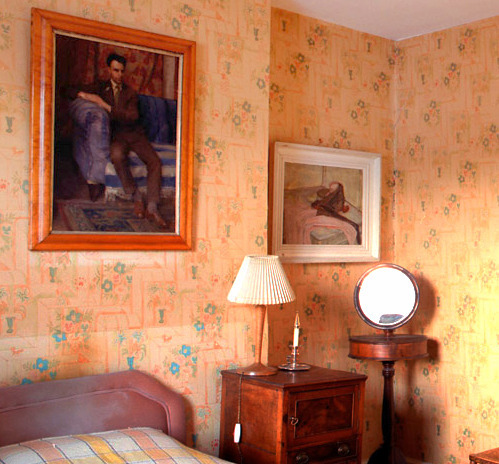
In the bedroom is the portrait of Edward Bawden that his friend Phyllis Dodd painted in 1929. Dodd would marry one of Bawden’s many biographers, Douglas Percy Bliss.
In 1929 she painted a likeness of Bawden sitting stiffly in his best suit and then she made portraits of Ravilious and later still his wife. ‡
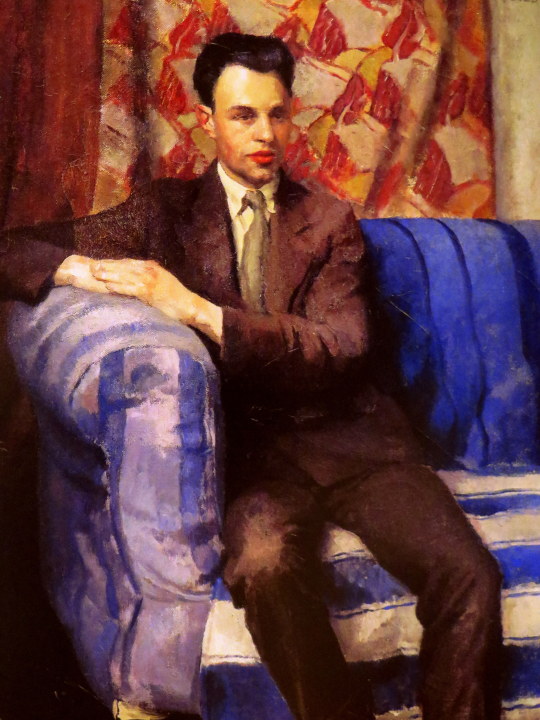
Phyllis Dodd – Edward Bawden, 1929

In this room upon a large Victorian chest of drawers there are two oil lamps and a set of Staffordshire figurines, behind them is one of the rarer Bawden prints of ‘Grasses in a Jug’. The wallpaper is by Bawden, ‘Riviera’ from 1929.
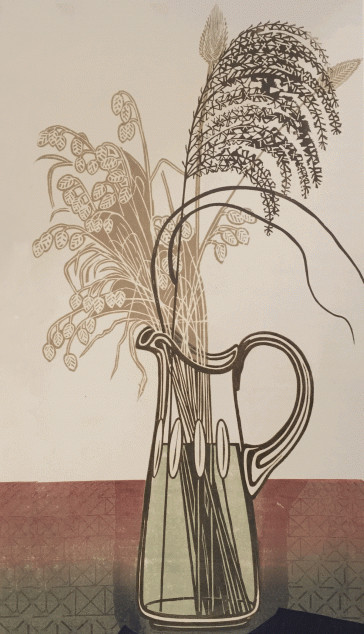
Edward Bawden – Grasses in a Jug, 1967
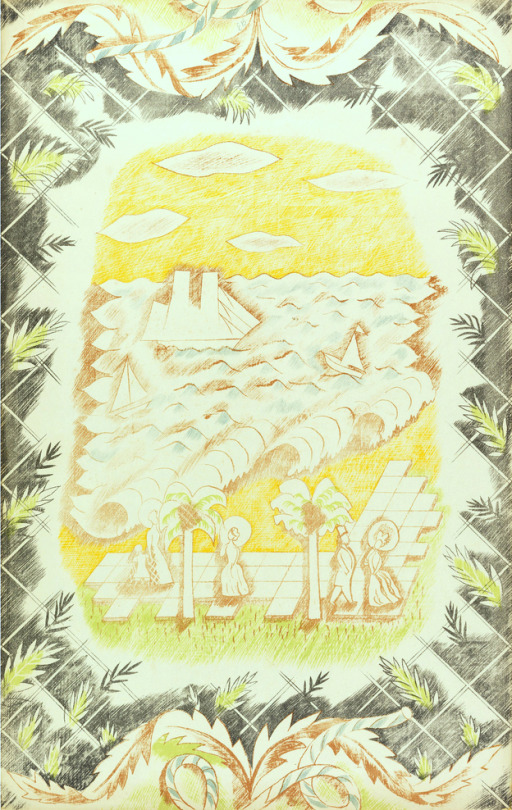
Edward Bawden – Riviera, 1929
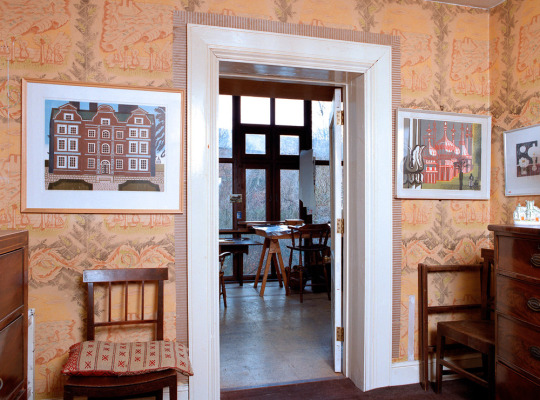
In this room with the Chest of Drawers of the photo above to the right we can see two more of Bawden’s own prints and to the right a Mary Fedden picture that looks like a nocturnal view of her print ‘The Lamp, 1972′.
In the centre the door is opening on to Bawden’s studio.
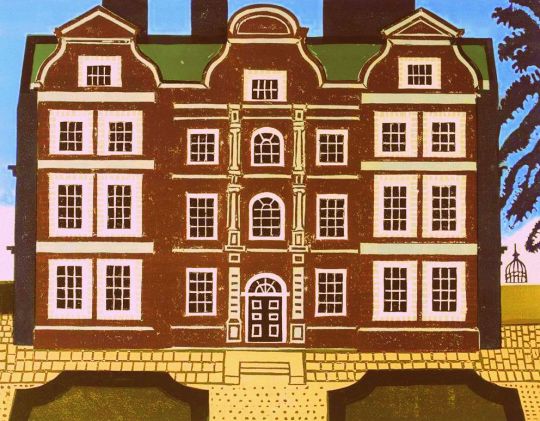
Edward Bawden – Kew Palace, London, 1983
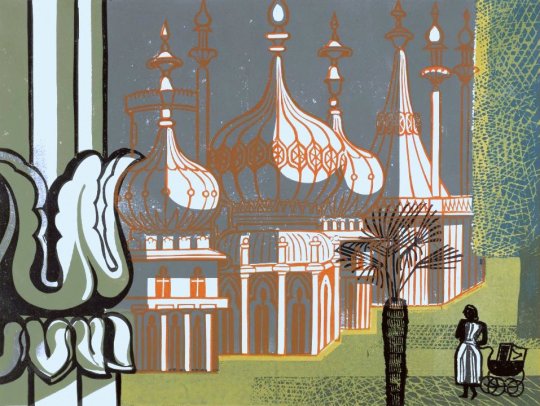
Edward Bawden – The Royal Pavilion, Brighton, 1956
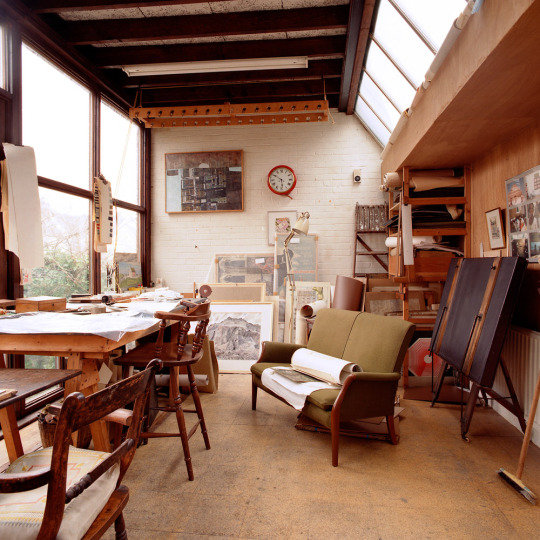
Here is a side view of the studio with picture racks and large artwork boards and tables to work from.
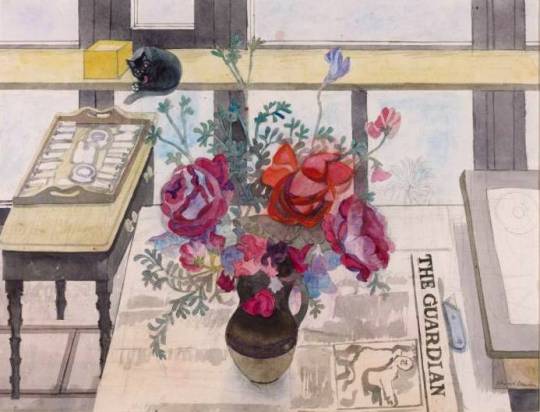
Edward Bawden – Roses and Rue, 1987
One of the most telling paintings is ‘Roses and Rue’. Bawden had no TV as he was profoundly deaf so most of his news came from copies of The Guardian. Painted in his studio it shows a tray of paints in the top left corner.
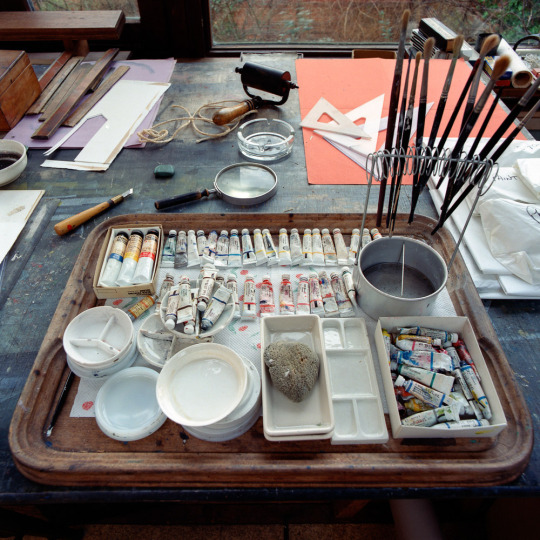
† David McKitterick – Wallpapers by Edward Bawden, 1989.
‡ Malcolm Yorke – Edward Bawden and his Circle, 2005
Bawden House Photographs c/o The Fry Gallery and Weeping Ash
♠ Art Fund – Harlequin by Eric Ravilious